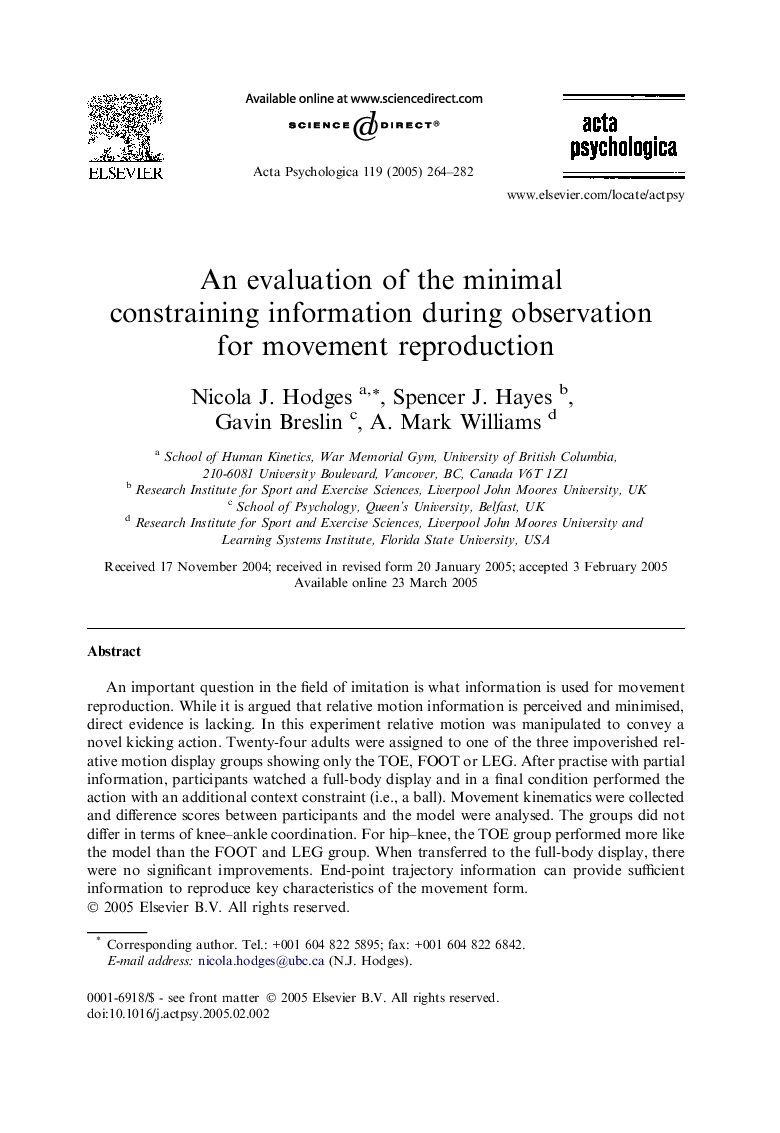| Article ID | Journal | Published Year | Pages | File Type |
|---|---|---|---|---|
| 10453989 | Acta Psychologica | 2005 | 19 Pages |
Abstract
An important question in the field of imitation is what information is used for movement reproduction. While it is argued that relative motion information is perceived and minimised, direct evidence is lacking. In this experiment relative motion was manipulated to convey a novel kicking action. Twenty-four adults were assigned to one of the three impoverished relative motion display groups showing only the TOE, FOOT or LEG. After practise with partial information, participants watched a full-body display and in a final condition performed the action with an additional context constraint (i.e., a ball). Movement kinematics were collected and difference scores between participants and the model were analysed. The groups did not differ in terms of knee-ankle coordination. For hip-knee, the TOE group performed more like the model than the FOOT and LEG group. When transferred to the full-body display, there were no significant improvements. End-point trajectory information can provide sufficient information to reproduce key characteristics of the movement form.
Related Topics
Life Sciences
Neuroscience
Cognitive Neuroscience
Authors
Nicola J. Hodges, Spencer J. Hayes, Gavin Breslin, A. Mark Williams,
